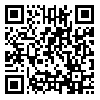year 5, Issue 2 (Summer 2017)
Ann Appl Sport Sci 2017, 5(2): 73-80 |
Back to browse issues page
Download citation:
BibTeX | RIS | EndNote | Medlars | ProCite | Reference Manager | RefWorks
Send citation to:



BibTeX | RIS | EndNote | Medlars | ProCite | Reference Manager | RefWorks
Send citation to:
Mohammadhasani F, Rostami R, Chhardah Cheric M. The Effect of a Combined Practice Course of Mental and Physical Practice with Systematic Increase in Contextual Interference on Learning a Kata Skill. Ann Appl Sport Sci 2017; 5 (2) :73-80
URL: http://aassjournal.com/article-1-405-en.html
URL: http://aassjournal.com/article-1-405-en.html
1- Department of Motor Behavior, Faculty of Sport Sciences, Shiraz University, Shiraz, Iran
2- Department of Motor Behavior, Faculty of Sport Sciences, Shiraz University, Shiraz, Iran ,rostami@shirazu.ac.ir
2- Department of Motor Behavior, Faculty of Sport Sciences, Shiraz University, Shiraz, Iran ,
Abstract: (10494 Views)
Background. Although some research showed the benefits of a systematic increase in contextual interference (CI), it is not completely proved in young children and novices.
Objectives. On the other hand, considering the recommendation of researchers about the advantages and the use of the mental practice, the aim of the present study was to combine mental practice with CI to improve motor performance in a kata skill. This study investigates the simultaneous effects of these two types of practice.
Methods. One school in Shiraz city was chosen randomly. Among the entire group of students in this school, 36 sixth-grade elementary school students of age 12 were chosen randomly to participate in this study. After filling out MIQ questionnaire, participants took part in initial instruction sessions and then participated in the pretest. In the next stage, they were randomly placed in three groups: blocked physical practice (B), physical practice with a systematic increase in CI and mental practice + physical practice with a systematic increase in CI (M-CI). The participants practised for five sessions and five trials in each session. In the last training session, an acquisition test, a subsequent retention test (48 hours later), and transfer test in a completion condition were conducted.
Results. The results showed a significant difference in the acquisition test in the CI and B contexts, and in the retention test and transfer tests, in the CI and M-CI contexts.
Conclusion. Considering the results, it can be deduced that the systematic increase in the CI has the highest effectiveness. After that, the combined practice (M-CI) has long-term positive effects on performance and learning a kata skill.
Objectives. On the other hand, considering the recommendation of researchers about the advantages and the use of the mental practice, the aim of the present study was to combine mental practice with CI to improve motor performance in a kata skill. This study investigates the simultaneous effects of these two types of practice.
Methods. One school in Shiraz city was chosen randomly. Among the entire group of students in this school, 36 sixth-grade elementary school students of age 12 were chosen randomly to participate in this study. After filling out MIQ questionnaire, participants took part in initial instruction sessions and then participated in the pretest. In the next stage, they were randomly placed in three groups: blocked physical practice (B), physical practice with a systematic increase in CI and mental practice + physical practice with a systematic increase in CI (M-CI). The participants practised for five sessions and five trials in each session. In the last training session, an acquisition test, a subsequent retention test (48 hours later), and transfer test in a completion condition were conducted.
Results. The results showed a significant difference in the acquisition test in the CI and B contexts, and in the retention test and transfer tests, in the CI and M-CI contexts.
Conclusion. Considering the results, it can be deduced that the systematic increase in the CI has the highest effectiveness. After that, the combined practice (M-CI) has long-term positive effects on performance and learning a kata skill.
Keywords: Mental Practice, Physical Practice, Kata Skill, Systematic Increase, Contextual Interference
Full-Text [PDF 476 kb]
(2396 Downloads)
APPLICABLE REMARKS
APPLICABLE REMARKS
• It is recommended that instructors and coaches consider factors such as age, the learner’s skill level, and the nature of the skill to provide instruction for developing motor skills, and according to the positive effects of the mentioned practice methods, use them in their practice schedules.
Type of Study: Original Article |
Subject:
Sport Psychology and its Related Branches
Received: 2016/07/12 | Accepted: 2016/12/26
Received: 2016/07/12 | Accepted: 2016/12/26
Send email to the article author
| Rights and permissions | |
 |
This work is licensed under a Creative Commons Attribution-NonCommercial 4.0 International License. |






